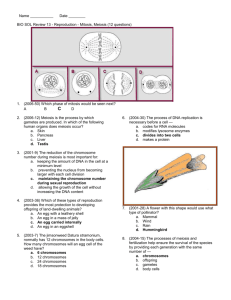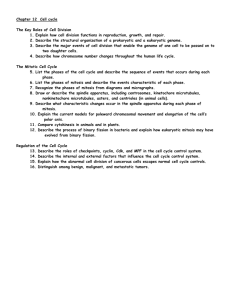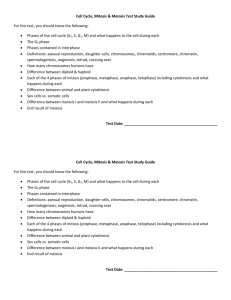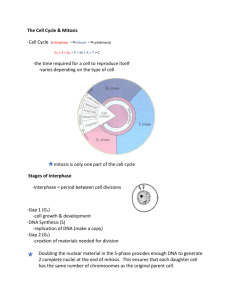Topic 8 Objectives
advertisement
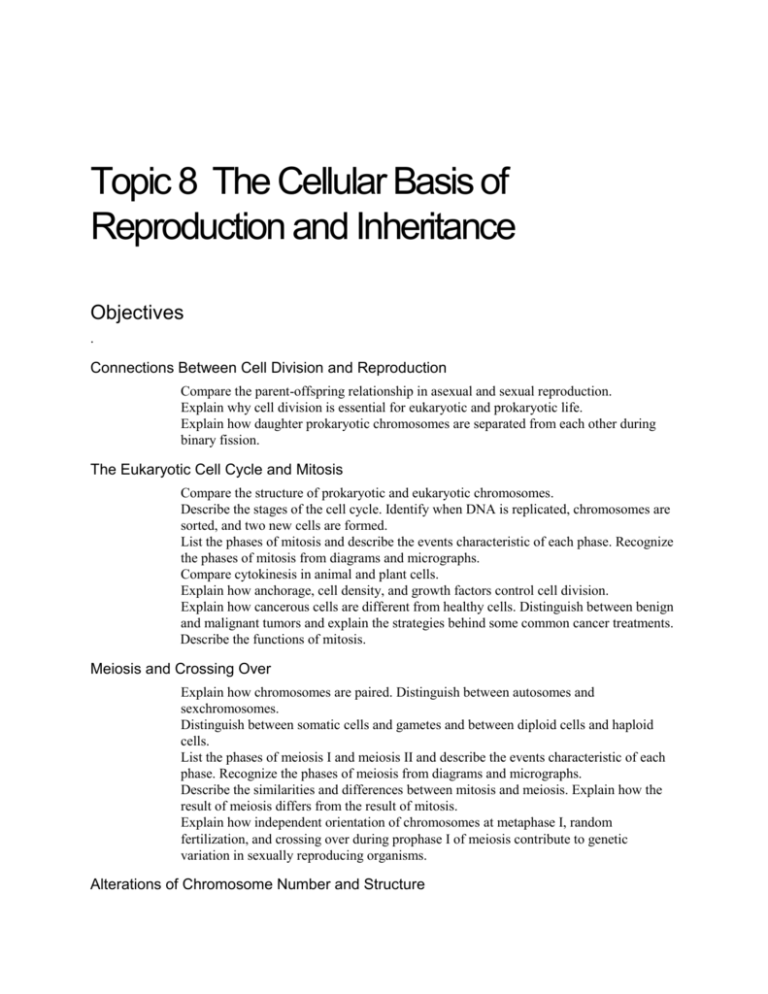
8 Topic 8 The Cellular Basis of Reproduction and Inheritance Objectives . Connections Between Cell Division and Reproduction Compare the parent-offspring relationship in asexual and sexual reproduction. Explain why cell division is essential for eukaryotic and prokaryotic life. Explain how daughter prokaryotic chromosomes are separated from each other during binary fission. The Eukaryotic Cell Cycle and Mitosis Compare the structure of prokaryotic and eukaryotic chromosomes. Describe the stages of the cell cycle. Identify when DNA is replicated, chromosomes are sorted, and two new cells are formed. List the phases of mitosis and describe the events characteristic of each phase. Recognize the phases of mitosis from diagrams and micrographs. Compare cytokinesis in animal and plant cells. Explain how anchorage, cell density, and growth factors control cell division. Explain how cancerous cells are different from healthy cells. Distinguish between benign and malignant tumors and explain the strategies behind some common cancer treatments. Describe the functions of mitosis. Meiosis and Crossing Over Explain how chromosomes are paired. Distinguish between autosomes and sexchromosomes. Distinguish between somatic cells and gametes and between diploid cells and haploid cells. List the phases of meiosis I and meiosis II and describe the events characteristic of each phase. Recognize the phases of meiosis from diagrams and micrographs. Describe the similarities and differences between mitosis and meiosis. Explain how the result of meiosis differs from the result of mitosis. Explain how independent orientation of chromosomes at metaphase I, random fertilization, and crossing over during prophase I of meiosis contribute to genetic variation in sexually reproducing organisms. Alterations of Chromosome Number and Structure Explain how and why karyotyping is performed. Describe the causes and symptoms of Down syndrome. Define nondisjunction, explain how it can occur, and describe what can result. Describe the consequences of abnormal numbers of sex chromosomes. Explain how new species form from errors in cell division. Describe the main types of chromosomal changes. Explain why cancer is not usually inherited.





